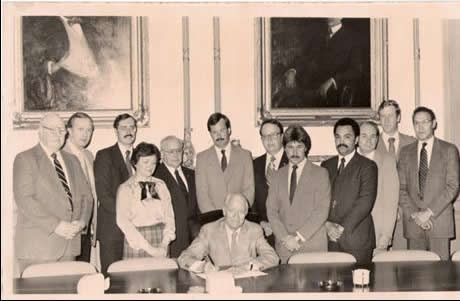Speaking to his newly hired enforcement agents in the summer of 1935, Excise Administrator Paul Fry outlined the agency's top priority when he urged the officers to, "dry up the sources of supply rather than to attempt to catch the petty hip-pocket bootlegger."
With the abuses and failures of Prohibition still fresh in everyone's memory, officers launched an assault on illegal stills and roadhouses in the tradition of the stereotypical "revenuer".
Long gone, however, are the days of officers in fedoras and double-breasted suits searching for after-hour "gin joints". Today, officers focus their efforts on combating underage drinking and the sale of alcohol to intoxicated patrons. The department continues to develop new tools and strategies to help accomplish the Commission's charge of protecting the "economic welfare, health, peace, and morals of the people of this state."

On April 10, 1985, Governor Robert Orr signed House Bill 1203 into law, granting full police powers to excise officers.
In 2006 the department began the implementation of the CODY record-management system. This state-wide information system allows officers in the field access to A.T.C. and criminal justice databases from their laptops using a wireless internet connection.
With the proven success of the tobacco retailer inspection programs, the department expanded compliance checks to include alcoholic beverage outlets across the state. The Survey of Alcohol Compliance (SAC) began using 18-20 year old youth to measure the state's rate of compliance in grocery stores, package liquor stores, and retail restaurant permit premises.
The department also realized its first budget dedicated specifically for law enforcement, effective July 1, 2007. Previous budgets were rolled into the Commission's overall budget. This change will allow the department to meet the fiscal challenges of ensuring the most relevant and up-to-date training and equipment is provided to help officers in the performance of their duties.
